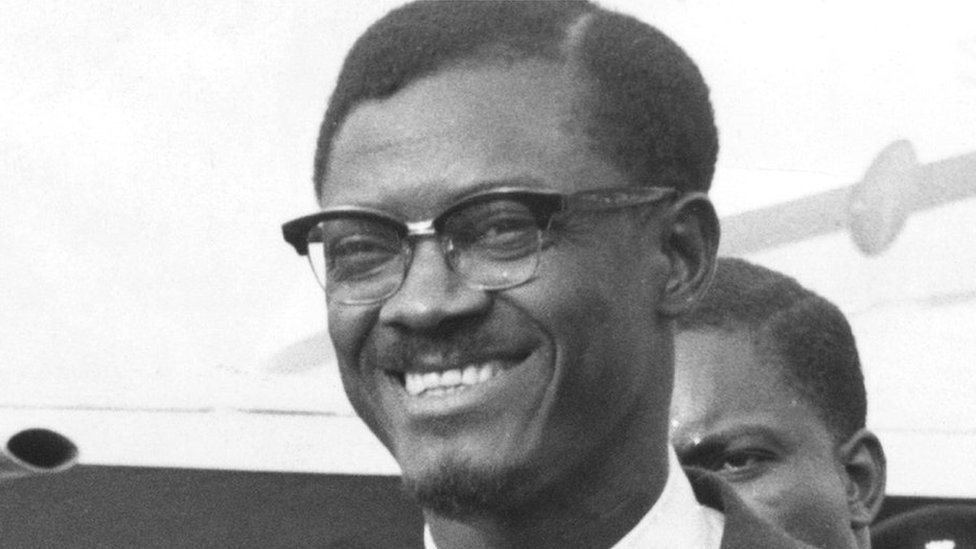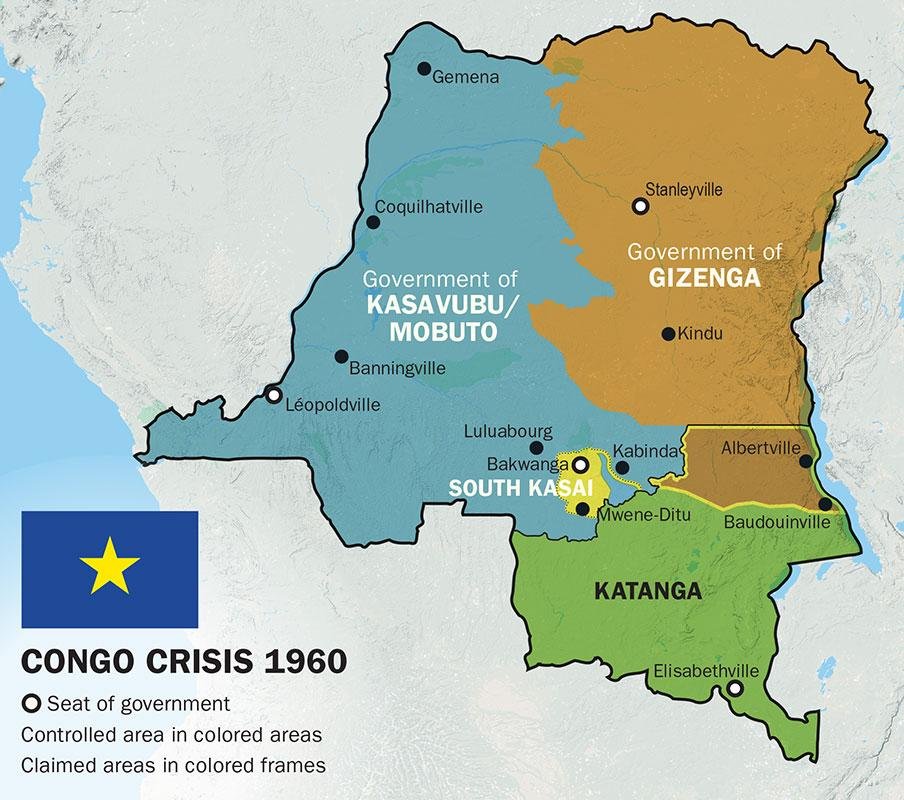NKENNE African Historical Series: Patrice Lumumba
by Vennisa Owusu-Barfi
Source: ibw21.org
With his meteoric rise and death shrouded in mystery and awe, Patrice Lumumba is often remembered as one of the most misunderstood leaders in African politics and history. Though often considered a pioneer in Afrocentric thought and leadership, his 10 day-stint as President of the Democratic Republic of the Congo was drawn between the crossfires of the Cold War and post-colonial interference of the Belgian Republic, the Congo’s former colonial master.
Humble Beginnings
Born and raised in the Katakombe region of the Kasai province in Belgian Congo, Lumumba quickly climbed the ranks from a postal clerk to the regional president of an independent Congolese trade union with his colleagues.1 After being briefly imprisoned on charges of embezzlement in the post office, he created the Congolese National Movement which was the first political party in the Congo with a nationwide reach. After attending the All-African People’s Conference in Accra, his political views shifted strongly towards Pan-Africanism and his political activity and discourse became increasingly militaristic with the goal of achieving Congolese independence from Belgian rule.2
Source: panafricanreview.rw
Belgian Independence and Chaos
Due to these activities, and an increased sentiment from the Congolese people towards freedom from Belgian rule, Belgium suddenly announced a move towards independence. Most analysts retroactively describe this as a power play to cripple and lead the largely unprepared and underdeveloped nation towards political and socio-economic disaster and draw them back to Belgian rule in the future. Unsurprisingly, faced with an inadequately trained human resource, the Lumumba leadership faced many challenges which culminated in secession of the region of Katanga (mostly backed by Belgium) and mutiny in the Congolese army.3 The region of Katanga is the most mineral rich in the Congo and the Belgian government feared a loss of control and foothold in the region due to Lumumba’s anti-colonial sentiments and policies.4
Source: arsof-history.org
The Cold War and The Congo
Though most analysts debate the cause of the crisis, most historians blame the poor state of human resource development in the country as well as foreign meddling in the Congo. Although Lumumba first reached out to the United Nations and the United States for support to quell the secession, the lack of response led to a switch to the Soviet Union for support, sparking an American call to action, as well as placing the Congo in between the already growing tensions of the Cold War. Lumumba’s predicament is not far off from other African leaders forced to pick sides in the global proxy-war (the Cold War) which reached great heights in the 1960s.5
Lumumba’s final hours and assasination remained a topic of contention for decades. However, various inquiries shed more light on the role of the United States and Belgium in his assasination, which culminated in a formal apology by Belgium in 2002. In 2022, Belgium returned a gold capped tooth, his only remains, to the Democratic Republic of Congo.
Source: peoplesdispatch.org
The State of African Freedom
Even though the rapid fall of most African states after independence below their potential was due to other contributing factors, the African democratic vision and ability to choose their own form of government was fundamentally threatened by foreign intervention. African leaders could not openly support government policies which did not favor one side without their swift removal from power. In essence, Africans were deemed independent but were not fully free to decide how to govern themselves and how to build their nations post-independence.
Sources:
N., K. J. I. (2007). République démocratique du Congo: Les générations condamnées: Déliquescence d'une société précapitaliste. Editions Publibook.
Encyclopædia Britannica, inc. (n.d.). Patrice Lumumba. Encyclopædia Britannica. Retrieved August 17, 2022, from https://www.britannica.com/biography/Patrice-Lumumba
Adeleke, contributed by: T. (2022, June 3). Patrice Emery Lumumba (1925-1961) •. •. Retrieved August 17, 2022, from https://www.blackpast.org/global-african-history/lumumba-patrice-emery-1925-1961/
(www.dw.com), D. W. (n.d.). Congo finally buries independence hero Patrice Lumumba: DW: 30.06.2022. DW.COM. Retrieved August 17, 2022, from https://www.dw.com/en/congo-finally-buries-independence-hero-patrice-lumumba/a-62316805
United Nations. (n.d.). Character sketches: Patrice Lumumba by Brian Urquhart | | UN news. United Nations. Retrieved August 17, 2022, from https://news.un.org/en/spotlight/patrice-lumumba-brian-urquhart



